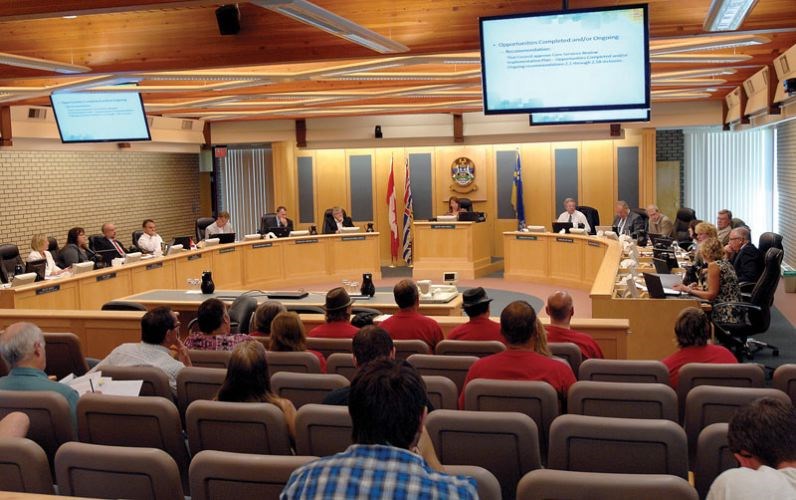While city council heard the pleas for help from Hart Highlands residents facing the cost of sanitary sewer installation, it ultimately decided Tuesday that relief won't be in the form of a grant.
Council voted unanimously during a special meeting Tuesday afternoon to go ahead with the staff recommendation to submit an erosion mitigation project for a federal-provincial grant instead of the second phase of the Hart Highlands work.
"I think that the Small Communities Grant that we're being asked to vote on today and, insofar as which project to apply it to, is actually a red herring, in my opinion, and it's deterring from the central issue at play," said Coun. Terri McConnachie.
That issue was that residents were looking for a way to keep costs low.
The city will put together a working group with the area residents to try and drive the costs down, said Mayor Lyn Hall.
Area resident Dale Grieves said she was both uplifted and let down by what she heard at Tuesday's meeting.
"I have to say there's been so many ups and downs, and this is both. I can see the value of the Fraser River project, but I know that this is something that council will need to deal with for the next 10, 20 years as well," said Grieves. "And if we can set out a good pattern of support and logical progressions for the installation of sewers, then our city will be the better for it."
Grieves - who along with Sylvia Korotash, researched and presented findings on grant opportunities to city council last October - disagreed with McConnachie's characterization of the grant funding as a red herring, noting that when they did their homework, the gas tax money and the Build Canada Fund were the only sources of financial aid available.
During a public meeting Feb. 5, residents were quoted a highest-potential cost of $2.9 million for the installation, which would be divided equally and applied to their property tax bills. Property owners are also responsible for the cost of hooking in to the city main from their individual home.
The estimate, which is based on the tendered projects for the past five, is nearly double the final cost of $1.5 million being billed to the first 100 homeowners in the first phase.
"And that's a difference between feeling a pinch versus a punch in the face," said McConnachie.
Savings were realized during Phase 1 due to city crews doing the work themselves as opposed to putting the project out to tender, as well as some luck in preferable weather conditions and a free gravel source.
There's a need for consistency, agreed Coun. Jillian Merrick, but didn't support using public money to keep the costs down.
"For decades the true cost of good infrastructure, both public and private have been deferred, often for political reasons. Spending required through the 70s, 80s and 90s was continually put off until now when these costs have come to a head in the new millennium and we're faced with massive infrastructure deficits to be shouldered by the next generation," she said. "The buck stops here, money needs to be reinvested today to invest in the sanitary sewer project immediately, but the question is who pays?"
The decision on for what to use the city's one application to the Build Canada Fund's Small Communities program was twice postponed from Jan. 19 to allow discussion with the 99 homeowners who are looking at a local area service tax to fund their connection to the city's septic system. There is a application deadline of Feb. 18.
Staff's proposal of the $1.4 million Fraser River Bench Land Outfall Remediation is supposed to build infrastructure to protect against future erosion and to fix erosion that has already happened along the Fraser River Bench Lands near Lower College Heights.
According to a report from city engineering services manager Dave Dyer, the erosion is caused by runoff from drainage from the entire watershed, consisting of 560 hectares in College Heights. This is resulted in a 20-metre cliff in a forested area that's not clearly visible.
"Though there are no official city trails or pathways developed, there are bush trails established by the public," said Dyer's report. "This is a significant public safety concern and could expose the city to a liability risk."
"You could be right next to this drop off and not even know it," said Coun. Brian Skakun. "It's a real safety issue and it has to get done."
Sediment running off into the river also puts the city at a liability risk to the federal department of fisheries and oceans.
The next step for residents is to vote on whether to actually go ahead with the project, accepting the local area service tax.

.png;w=120;h=80;mode=crop)

